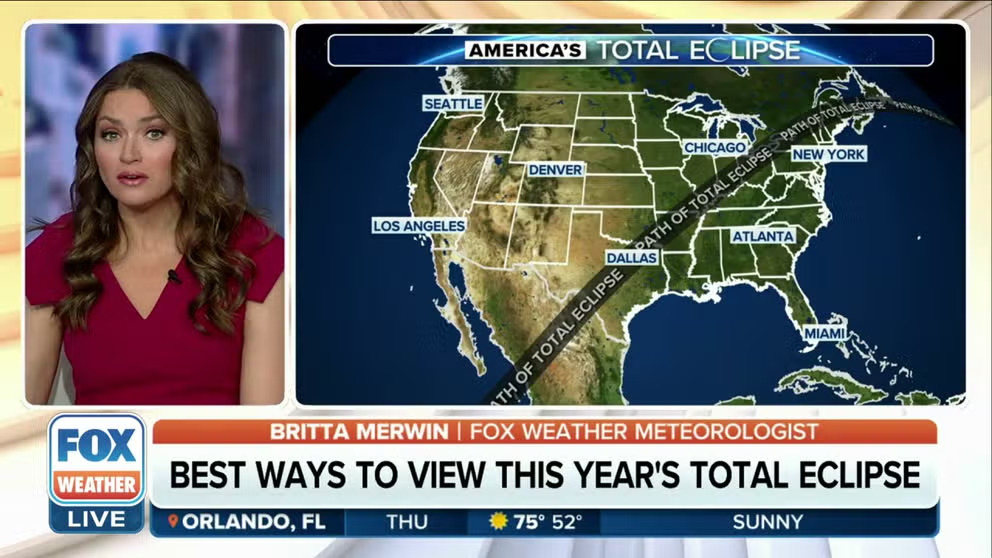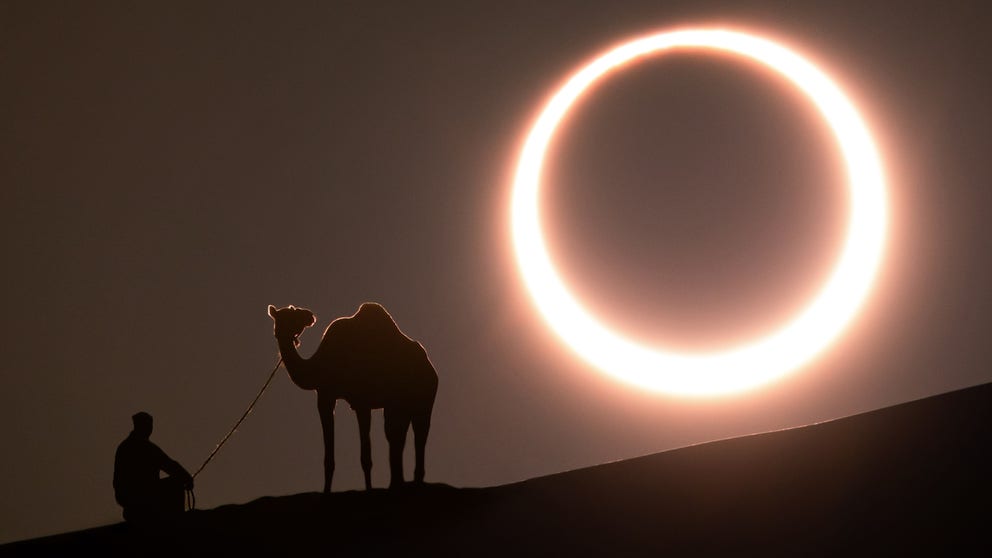What happens to clouds during a solar eclipse? New research may surprise you
New research shows that low, cumulus clouds dissipate when only 15% of the sun is covered. So that is one less thing to worry about on April 8 if you are travelling to a city that will see the total solar eclipse.
Best ways to view this year's total solar eclipse
We are eagerly anticipating America's total solar eclipse on April 8. During this phenomenon, the Moon will come between the Earth and the Sun, resulting in the Sun being covered in our sky. However, it's important to note that the total eclipse will only be visible along a narrow path on Earth.
Could low clouds interfere with your epic experience of the Great North American Solar Eclipse? Not to worry, new research shows that cumulus clouds dissipate during even partial solar eclipses.
Research published in the journal Nature, showed that the low, fluffy white clouds started to disappear when only 15% of the Sun was shaded by the Moon.
The total solar eclipse shadows part of the nation on April 8. Onlookers will flock to cities from Texas to Maine because you won't be able to watch another total solar eclipse from the U.S. until 2045. Already, Bell County, Texas, has declared a State of Emergency because the influx of people will stress the infrastructure and emergency responders.
WHO WILL BE ABLE TO SEE THE APRIL 2024 TOTAL SOLAR ECLIPSE?
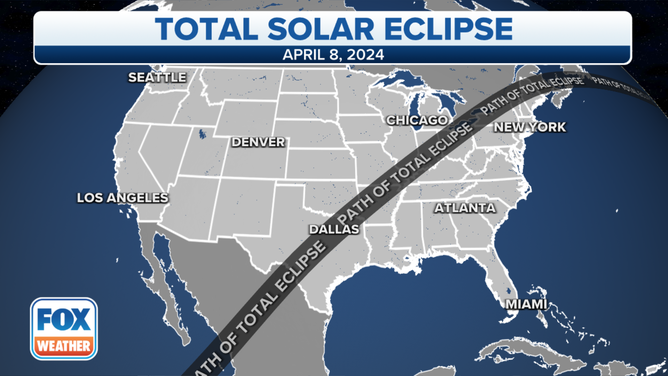
Path of totality during the Great North American Solar Eclipse on April 8, 2024.
(FOX Weather / FOX Weather)
Unfortunately, the average cloud cover in Bell County is 40% to 50% at that time of year, over a 20-year average, according to NOAA. However, travelers may not have to worry about the afternoon clouds caused by the Sun heating the Earth. Even the more stubborn clouds became less opaque.
"The time series shows that the increasing cloud cover in the morning already halted at low obscuration (blocking of the sun) fractions (~15%), happening at around 09:30 UTC (11:30 am local time where totality was around 1 p.m. local time) which was 30 minutes after the start of the eclipse," wrote authors. "Secondly, there was a ~50-minute time lag with respect to the instant of maximum obscuration (totality) at 10:52 UTC before the clouds started to return."
That means that even after the Sun partially reappears, clouds don't start forming again for almost an hour.
EARLY ARRIVALS TO CLEVELAND GUARDIAN’S HOME OPENER COULD CATCH GLIMPSE OF TOTAL SOLAR ECLIPSE
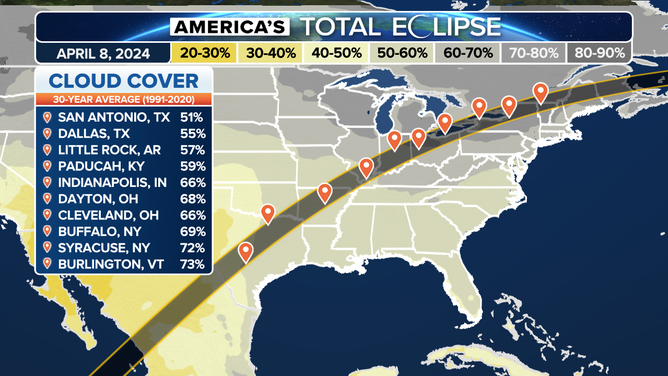
Average cloud cover for the path of totality.
(FOX Weather)
WILL WEATHER COOPERATE FOR TOTAL SOLAR ECLIPSE IN APRIL?
Why do clouds disappear with the Sun?
During an eclipse, the Moon moves in front of the Sun and blocks energy, incoming solar radiation, from hitting the Earth's surface. Just like at night, we cool down without the Sun's rays.
The visible light from the Sun is converted to heat when it is absorbed by the ground. That means the air just above the ground heats up. Hot air rises, so like a balloon, that parcel of air heats up.
The temperature generally gets colder with height, so at some point, the parcel of air can't hold all the moisture in it. That moisture condenses out of the air and makes clouds. Without the Sun and heat, air starts to sink, and the water droplets become invisible vapor again.
HOW TO SAFELY WATCH A SOLAR ECLIPSE
What is a solar eclipse? The different types and how they happen
During a total or annular solar eclipse, the Moon passes in front of the sun and casts its shadow upon the Earth's surface.
Research could solve climate change worries
The researchers wrote that so little is known about how solar dimming impacts clouds despite those clouds playing such a big part in the planet's heat/solar radiation balance. Their main goal was not to prove better viewing of a solar eclipse but how to cool the Earth's surface despite rising greenhouse gases and warming.
2023 FINISHES AS WARMEST YEAR ON RECORD

File: Fair weather cumulus clouds.
(Billy Huynh/Unsplash / FOX Weather)
"Blocking part of the solar radiation incident (making it to the Earth) on the Earth’s (lower) atmosphere and surface is one of the proposed strategies to counteract the current and future global temperature rise, which may be inevitable if climate change mitigation efforts prove to be insufficient," wrote the authors.
"This type of (solar) geoengineering is based on placing sun shields or reflecting particles in space between the Earth and the Sun or on the injection of aerosols into the stratosphere," the study continued.
Models showed that just a 3.5% to 5% reduction in the amount of solar radiation hitting the planet "can largely undo the global temperature rise and intensified hydrological cycle (more intense storms) associated with a quadrupled pre-industrial carbon dioxide concentration."
Rare total solar eclipse
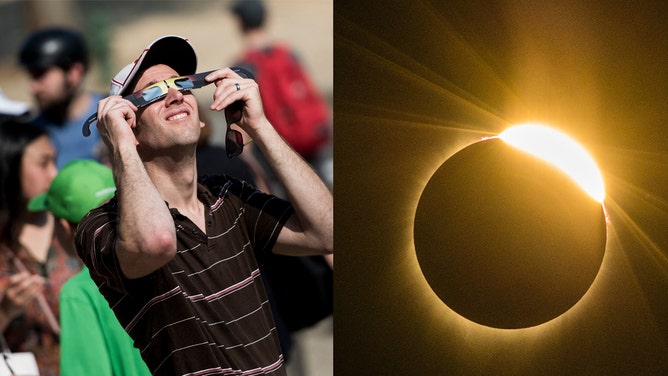
File: The total solar eclipse Monday August 21, 2017 in Madras, Oregon.
(ROB KERR / AFP / Getty Images)
Solar eclipses happen about twice a year, but finding yourself under a total of one is rare. According to the American Astronomical Society, any given spot on the planet only sees temporary darkness from the Moon’s shadow once every 400 years.
